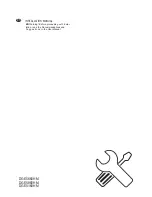
the same size.
NEVER CONNECT TO ONE OF
SMALLER SIZE.
Flues wholly constructed of
single skin pipe are not recommended under any
circumstances, due to their inability to retain heat.
Such chimneys will inevitably give rise to the
formation of condensation.
Flue materials: Salt glazed earthenware flue,
purposely
made
pre-cast sealed concrete
chimneys, rigid or flexible stainless steel liners
suitable for oil firing appliances.
IT IS NOT RECOMMENDED TO CONNECT TO A
FLUE SMALLER THAN 150mm (6”) OR IN
EXCESS OF 175mm (7”) DIAMETER.
NOTE:
Fill voids and area around liner with
vermiculite or a comparable approved material.
Fig.4
LOCATION
When choosing a location for this appliance you
must have:
(a) S u fficient room for the installation (see
clearances), a satisfactory flue and an adequate
air supply for correct combustion and operation
(see
Ventilation
and
Combustion
Air
Requirements).
(b) Adequate space for maintenance and air
circulation.
(c) Solid floor or base of non-combustible material
which is capable of supporting the total weight of
the appliance. (see Technical Data).
HEARTH CONSTRUCTION
When a non-combustible floor surface is not
available then we recommend that the cooker be
placed on a slab of pre-cast concrete 40mm (1
1/2”
)
deep or a slab of other insulating material. The
hearth must extend 150mm (6”) to either side of the
appliance and 225mm (9”) to the front. The cooker
must stand on a flat surface.
ELECTRICAL SUPPLY
All wiring external to the appliance must conform to
the current BS 7671 (U.K.), Safety Document 635,
ETC: Part 1 Section 5.6.4 & The Electricity at Work
Regulations. The cooker requires a 230V - 240V,
50Hz supply. Connection of the appliance and any
system controls to the mains supply must be
through a moulded on plug top, (with a 5 Amp fuse
fitted) which is fitted to the appliance in accordance
with EN 60335, Consumer Protection, SI 1994 No.
1768, plug and sockets etc. (safety) Regulations
1994.
A LWAYS INSTALL IN ACCORDANCE WITH
CURRENT LOCAL WIRING REGULATIONS.
WARNING: THIS SUPPLY AND APPLIANCE
MUST BE EARTHED
(Refer to B.S. 7430:
Code of Practice for Earthing).
Where a risk of low voltage can occur, a voltage
sensitive device should be fitted to prevent start up
of the burner so as not to endanger the installation.
To isolate the appliance completely, unplug from the
mains socket. Always ensure that this socket is
easily accessible and close to the appliance.
Persons in charge of this appliance should be aware
of this socket outlet position.
CLEARANCES TO COMBUSTIBLES
When using a tiled background and/or if you want to
bring the Stanley to standard counter top depth (i.e.
600mm (24”) and leave no gaps at the back of the
cooker use the back filler piece which is 85mm
(3
1/4
”) deep. There is a flue pipe collar available
which surrounds the flue where it meets the wall,
giving a tidier finish to a tiled background. All filler
pieces and flue pipe collar are available as optional
extras. (see fig. 4)
When bringing the kitchen units up to the sides of
the cooker hob leave a 10mm (3/8”) gap between
the hob and adjacent units (see fig. 5). This gap can
be masked by fitting a filler strip up to the Stanley
leaving a 5mm gap (see fig. 6). An optional hob rear
cast iron filler strip is available, see fig.4.
Leave minimum 52mm (2”) at rear of cooker to a
combustible material (see fig. 5). Leave minimum
26mm (1”) at rear of cooker to a non-combustible
material (see fig.6)
If optional hob rear filler piece is to be fitted leave
87mm clearance between hob and wall surface.
7









































